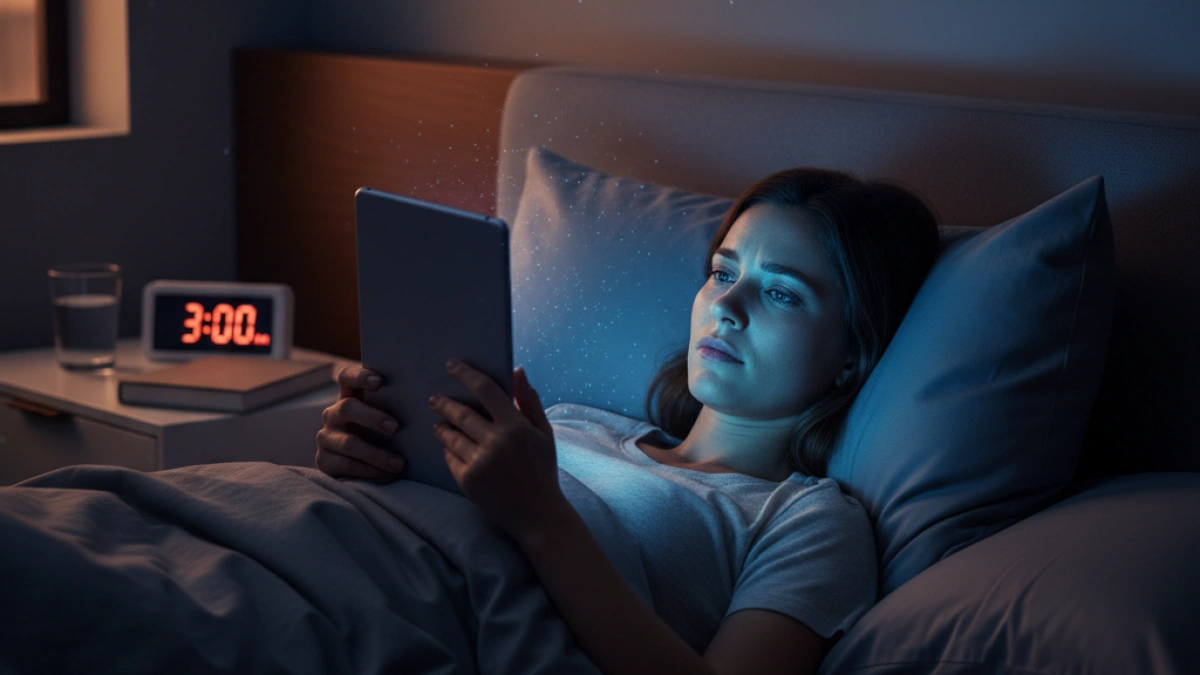Impact of blue light from screens on health and sleep

In the digital age, constant exposure to screens from phones, tablets, computers, and televisions has become an integral part of daily life. These devices emit blue light, a type of high-energy visible (HEV) light, raising widespread debate about its possible effects on health. Below, we will explore expert opinions on the risks and consequences of blue light for human well-being.
What is blue light and where is it found?
Visible light to the human eye encompasses a spectrum of colors, and blue-violet light is notable for having one of the shortest wavelengths, giving it greater energy. The main source of blue light is the sun, but it is also present in artificial sources such as LED lamps, energy-saving bulbs, and, especially, in the screens of electronic devices.
Although the amount of blue light emitted by screens is significantly lower than that of the sun—one hour outdoors on a cloudy day exposes a person to 30 times more blue light than one hour in front of a screen—the problem lies in the long duration of exposure and the close distance at which these devices are used.
The impact of blue light on sleep and circadian rhythm
One of the most documented effects of blue light is its influence on the sleep-wake cycle, also known as the circadian rhythm.
Read also
- Suppression of melatonin: Blue light, especially when exposed during the night, interferes with the production of melatonin, the well-known "sleep hormone." This hormonal alteration informs the brain to remain alert, thereby hindering the process of falling asleep.
- Increasing insomnia: There are more and more cases of insomnia associated with poor sleep hygiene due to the use of electronic devices right before bed.
- Consequences of lack of sleep: Poor quality of rest can lead to fatigue, decreased concentration, and an increased risk of developing anxiety and depression.
To mitigate these effects, experts suggest avoiding screen use in the hours leading up to rest and enabling the "night mode" option on devices to reduce brightness and blue tone emission.
Does blue light damage our eyes?
This topic has generated much controversy. While initial studies raised concern, current evidence is more nuanced.
- Digital eye strain: The discomfort that many people experience after prolonged screen use, such as dry eyes, fatigue, or blurred vision, is likely due to digital eye strain. This originates from reduced blinking when focusing on a screen. To alleviate this issue, it is recommended to follow the "20-20-20" rule: every 20 minutes, look at an object 20 feet (approximately 6 meters) away for 20 seconds.
- No evidence of retinal damage from screens: To date, there is no conclusive evidence that the blue light emitted by everyday screen use causes retinal damage or can lead to blindness. In fact, the amount of blue light coming from screens is considerably less than what is received from the sun. A review of studies by Cochrane concluded that blue-light-filtering glasses likely have no positive effects on digital eye strain or protect the retina.
- Risks of UV light: It is crucial to differentiate between blue light and ultraviolet (UV) light, the latter of which can damage ocular tissues and lead to problems such as cataracts or macular degeneration. For this reason, it is essential to wear sunglasses that provide 100% UV protection when outdoors.
Other health effects
The influence of blue light is not limited to vision and sleep; it can also affect other aspects of health.
Read also
- Skin and aging: Scientific research indicates that exposure to blue light can cause oxidative stress, alter the skin barrier, and increase pigmentation, resulting in premature skin aging. This effect seems to be more pronounced in individuals with tanned skin types (phototypes 3 and above).
- Mental health: Overexposure to digital devices has been associated with increased levels of stress, anxiety, and irritability. It can also contribute to social isolation by decreasing face-to-face interaction.
- Blood pressure: One study observed that using amber-colored lenses to block blue light at night not only improved sleep quality but also seemed to lower blood pressure in participants, suggesting a possible link between blocking this light and improved cardiovascular health.
How can we protect ourselves?
Adopting appropriate sleep hygiene and visual care measures is essential to minimize exposure to blue light.
- Limit screen use before bed: It is recommended to avoid using electronic devices at least two hours before bedtime.
- Keep devices out of the bedroom: This is an obvious and effective solution to ensure adequate disconnection for the brain before sleeping.
- Use filters and night modes: It is suggested to activate the "night mode" on devices to reduce the emission of blue tones at night.
- Consider filtered lenses: Although their effectiveness in combating digital eye strain is debated, some people find that blue-light-filtering glasses or amber lenses provide greater visual comfort, especially at night. A study revealed that using amber lenses two hours before sleep helped participants with insomnia gain approximately 30 additional minutes of sleep.
- Protect the skin: To counteract the effects on the skin, it is recommended to use sunscreen, especially those containing color, as they have been shown to absorb blue light.
- Take regular breaks: Implement the 20-20-20 rule to reduce digital eye strain.
In conclusion, the blue light emitted by screens, while not posing an imminent risk of blindness as some initial claims suggested, does have a significant impact on sleep cycles and overall well-being. Adopting healthy habits in the digital environment is crucial to mitigating its negative effects and protecting long-term health.
To learn more about health and wellness topics, keep exploring more content on my blog.











































